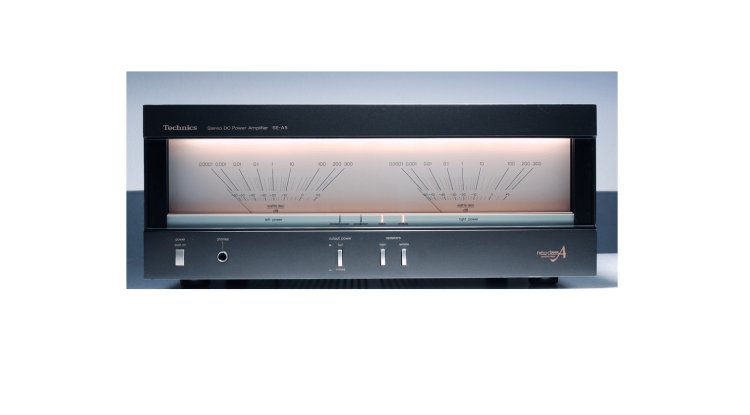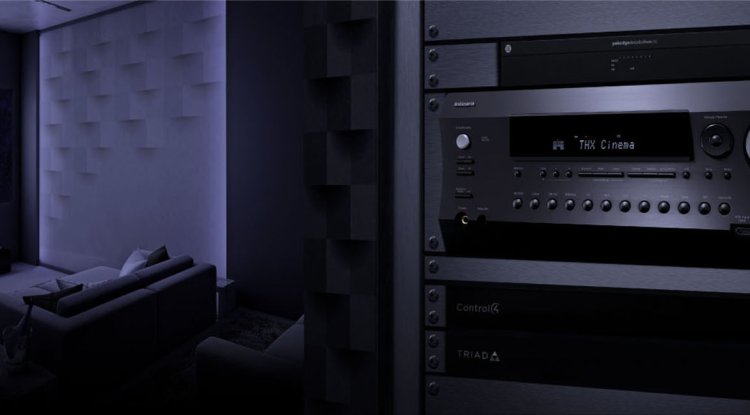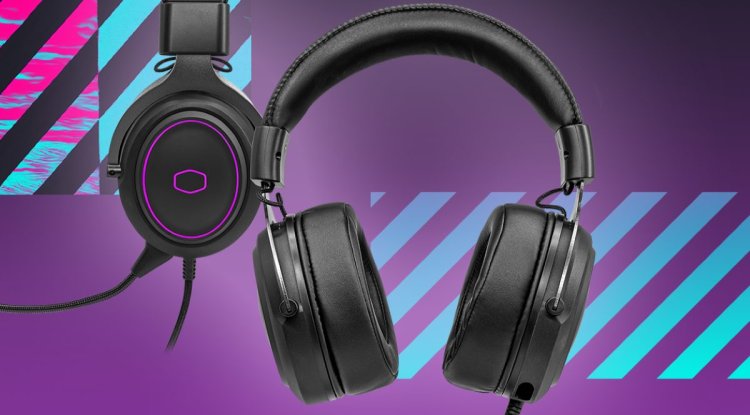55 years of Technics – a tribute

Technics lasting 55 years - 55 years? Yes, the hi-fi baby of Panasonic's mighty parent business is, in reality, a kid in comparison to its Japanese counterparts. Until 2008, Matsushita (named after business founder Konosuke Matsushita) marketed its consumer electronics goods under the brand names "National" and "National Panasonic." However, by the mid-1960s, it was decided that it was time to develop its own HiFi line. A perfectly sensible conclusion, given the market's desire for high-quality audio goods. Competitors like Sansui (first pre/power amp combination in 1954) and Pioneer (first hi-fi speaker in 1953) were already strongly invested in this area. A new brand should distinguish itself from a well-known maker of household appliances and bicycles.
The history of Technics may now continue with a list of milestones, although this is nearly impossible. On the one hand, Technics has released an astonishing number of exceptional items, the scope of which is beyond the scope of this article. On the other hand, the youthful hi-fi brand Technics is rife with tales, stories, and superlatives unrivaled in the land of the rising sun. https://www.youtube.com/watch?v=g0rDAp1eQNA
The beginnings
The origins of Technics can be traced back to an unusual choice of name. Something unique and creative was required. A huge advertising firm would be hired to execute this today. Not in 1965, and certainly not with Matsushita. Shinichiro Ishii, a former MEI (Matsushita Electric Industries) developer, spoke casually about the inside narrative in a 2014 interview published by the Japanese news outlet Impress News. As a result, he and his colleague Naratsugu Sakamoto would have had to come up with their own "brand" name.
They looked up the English plural for "technology" in a Japanese-English dictionary and came up with technics. That's how it stayed. The "Technics 1" designed by Sagamoto and Ishii was the first product under this name to arrive in the same year, 1965. Ishii, who was born in 1934, had already created a new horn tweeter, the 5HH17, that was now employed in the new two-way box. Sagamoto, no novice, was already winning awards in 1954 for his 8PW1 double-diaphragm loudspeaker (later the Technics EAS-20PW56, which was nicknamed "Genkotsu" for "Fist"). Two senior engineers who were given free freedom to express their creativity - that could only be a good thing.
And so it was that the very first draft was a tremendous triumph! Both critics and customers were won over by the sound of the bookshelf speaker. So far, so good. Then it all happened at the same time. The first turntable with a belt drive appeared the next year. It would be some years before the direct drive was ready for mass production. Because it had a popular tangential tonearm, the Technics 100P was unquestionably a very current design. A servo system controlled the pickup's position so order to accurately guide the stylus across the groove when playing the record - or when picking a song. This also had the huge advantage of significantly reducing tracking mistakes and auditory distortions.
Standing out from the throng may have also had a factor. The Technics 10A and 20A models were released the same year as the first pre/power amp combination. The 10A pre-amplifier wowed the technical world with its two-stage AF circuitry, which provided superb dynamics with minimum distortion. The 20A power amplifier included 20 types 50HB26 electron tubes - ten for each channel - and was quite powerful for its time. Matsushita developed the modified pentodes for hi-fi operation, which were also utilized in televisions.
With low distortion, the amp produced a remarkably high output power of 2 × 80 watts into 16 ohms. Who is curious about the 16 ohms: The 20A followed the OTL approach (OTL = Output Transformer Less), which required a power development impedance of 16 or 32 ohms. At various points in time, Technics was undeniably on the correct route.
Fuyuki Segawa, the industrial designer and editor of Japan's first hi-fi magazine "Stereo Sound," became aware of the nascent firm. In a letter to the designers, he appreciated the pre-amp combination but expressed dissatisfaction with the design. The euphonious components appeared to him to be "like household appliances." It had to be a short distance back then, since Ishii and Sagamoto, who were also in charge of the optics, then commissioned Segawa to build the future integrated amplifier. That was a bit risky, given that the industrial designer had previously worked for Pioneer. It's no surprise that his only condition was that no one knew about his work. Shinichiro Ishii didn't share the well-kept secret until 2014.
Fuyuki Segawa tragically died in 1981 at the age of 46. However, his influence on future generations of gadgets is undeniable; he lay the groundwork for Technics' recognizable design of the golden 1970s, which continues till this day. The 30A integrated amplifier was Segawa's first piece of work. It didn't end there; he was also responsible for the creation of the first transistor amplifier, a product that equally impressed him in terms of sound: "What made a great impact on me was the amazing sound quality of the Technics 50A."

It wasn't an exaggeration, because Segawa wasn't your average Japanese exponent of polite, reserved language when it came to the subject at hand. He described the sound of transistor amplifiers at the time as "the harsh and unpleasant feeling of a wire brush caressing my ear." It doesn't get any clearer than that. It took the advent of the Technics 50A in 1969 to persuade him of the transistor principle. "The 50A was definitely a masterpiece from the Ishii group, who had done their best with tube amps and aspired to achieve a sound that was as excellent as the finest, and he posed satisfied me with its smooth, gentle, and natural tone," a reviewer wrote years later.
The SP-10 and other legends
That same year, Technics unveiled the innovation that would propel the company to international prominence: the SP-10, the first direct-drive disk drive! An announcement has a hidden agenda. Shuichi Obata, the leader of the turntable development section, was originally skeptical of his work. Not because of technology, but because he was concerned that production would become prohibitively expensive. Shinichiro Ishii, on the other hand, was convinced of the drive and devised a daring marketing strategy. He just announced the SP-10 in June 1969 for 1970 and waited to see how people reacted.
And they were fired up! Large radio stations, in particular, were looking for quick-starting, maintenance-free drives. So, exactly a year after its announcement, the SP-10 arrived in June 1970, and the BBC was one of the first broadcasters to acquire it.
Soon after, turntables with frames and tonearms (SL-1000) appeared, followed by the mid-range model SL-1100 in 1971 and the first SL-1200 in 1972. This was to be the start of an amazing triumphal march around the world, in all its version numbers. The main reason for the robust turntable's success, however, was not originally the hi-fi aficionados, but the DJs. First and foremost, DJ Kool Herc, who is widely regarded as the father of hip-hop. He invented the "merry-go-round" method.
Herc used the record to highlight a short, extremely percussive section: the "Break." Because this section of the song drew the greatest attention on the dance floor, Herc isolated it and prolonged it simply by switching between two turntables. These had to be Technics, how could they not be?
When one record reached the end of the break, DJ Kool Herc inserted a second record at the start, allowing him to prolong a relatively brief portion of music to five minutes. Because the DJ required a turntable with a high beginning torque, a direct drive was required.
This triumph was not lost on the engineers at Technics. They listened to DJs who complained about minor flaws in professional use, therefore the SL-1200MK2 arrived in 1978, becoming the most well-known model to date. Technics enhanced the motor's stress resistance, added a ground wire, and switched from rotary pitch control to slider control. More than five million SL-1200s have been produced by 2010. A record that was even inscribed in the Guinness Book of Records as the longest-running consumer electronics device.
In the top end, Technics also performed admirably. The SP-10MK2 was released in 1976, following the SP-10. This model was the first to use a quartz motor control. In practice, the servo-controlled motors displayed minor speed variations based on the temperature. Although this could be corrected with a potentiometer, the quartz control now in use eliminated this issue once and for all.
The beautifully designed EPA-100 tonearm, which had ruby ball bearings and was composed of titanium nitride, was clearly geared at hi-fi enthusiasts. This was in an "obsidian" frame (obsidian = volcanic rock glass) in the complete versions SL-1000MK2, SL-1000MK2A, and SL-1000MK3. They exemplified what was technically possible at the time. Nobody could have done it better. https://www.youtube.com/watch?v=Qg2UCVaUbo4
Technics also intended to demonstrate this with the SU-A2 and SE-A1, a pre/power amplifier combo that has been the subject of many stories and legends. It was originally made available to the public in Germany in 1977, in the HiFi catalog. The heft alone is impressive: the preamplifier, complete with various knobs and switches, weighed 40 kilos, while the power amplifier's pointer only stopped at 51 kilograms. Technics produced the power amplifier, which ran in true Class A+ mode and delivered 350 watts into 4 and 8 ohms.
The optics of the dominant output stage VU meter alone burnt into generations' retinas and became a trademark of Technics amplifiers. The amps, which were exclusively produced to order, cost 38,000 Deutschmarks – exactly 1,700 Deutschmarks more than Porsche was charging at the time for a 911. You had to be patient if you had the essential transformation and wanted the noble portions. A lot of patience is required. Although legend has it that just 350 technicians were responsible for the creation of these two types of devices, the output remained low after three years due to the need to hand-pick the components, among other reasons.
According to enthusiasts, by the end of 1980, when Matsushita pulled the ripcord, fewer than 150 copies had been created and sold.
In fact, no other hi-fi device costs more than this pre/power amp combo at the " Audio Fair 1980 " in Tokyo. Collectors claim that no two are the same, which an early test of Fuyuki Segawa's gadgets appears to validate. "I listened to two SU-A2 preamps, but they sounded slightly different (…)," he noted in Stereo Sound in 1978.

He also tested the SB-10000 loudspeakers and commented, "You can feel what you don't hear." It seems arrogant, but the technical numbers make it clear. Because the SB-10000 was, as one would assume, a superlative built of material: They took five years to create, weighed 140 kg apiece, and had a 46-centimeter bass paired with a midrange and tweeter horn - the membrane of the tweeter was made of boron. They attained a 1W/1M efficiency of 95dB. Freely interpreted: those who couldn't hear had no choice but to feel; there was no other option.
The SB-10000 was originally intended for the first transistorized pre/power amp pair, the SU-10000, and SE-10000 (1972).In terms of cost, the loudspeakers were a good match for the amplifier combo, as they would have cost more than $26,000 now (adjusted for inflation).
Fuyuki Segawa realized this as well, and we will give him one last chance to speak. "I hope that the Technics brand does not become too enormous," said the renowned hi-fi critic and designer, who was impressed that Technics, as a subsidiary of an electronics behemoth, could even finance such experiments: "I hope that the Technics brand does not become too big." But I think I don't have to be concerned. Because as long as this company is able to manufacture highly sophisticated items like the SB-10000, the SE-A1, the SU-A2, and others, which are generally difficult for a smaller company to produce, I believe that such concerns are merely the concerns of elderly women. It is arguably unusual for such a large firm to be able to produce such an ultra-luxurious product."
However, aside from the "ultra-luxury goods" that were costly or impossible to buy, Technics primarily offered good, high-quality hi-fi for everyone. You had to save a little longer in certain situations, but that was true for all manufacturers throughout the 43 cm component boom. The pre/power amp combo SU-9600 / SE-9600, which had inherited some of the 10000 series' characteristics, was one of many exceptional components.

These magnificent hi-fi components were "turned from the solid," as was customary for Technics at the time. They weighted more than 35 kg altogether, and no expense was spared in terms of material. They had these ingenious little features that demonstrated that they were still pure technical achievements, with no discernible influence from merchants. For example, the power amp, which was rated at 2 x 165 into 4 ohms continuous, included a thermal label on the cooling fins that changed color from yellow to orange when the temperature increased above a particular level to notify the user. The preamplifier's phono stage was infinitely adjustable, allowing for the use of a wide range of pickups. Practical ideas that succeeding generations fell prey to when it came to saving money. According to rumor
However, this did not detract from the brand's success because it was still on the rise. Technics excelled not only in speaker and amplifier design, but also in the production of tape machines such as the classic RS-1500 or the considerably more ambitious but extremely rare RS-1800, cassette recorders (RS-9900US), and tonearms (EPA-100MK2) with the hammer hanging. The product variety expanded rapidly, and individuals used the restroom on occasion. Not everything could persuade the end-user, whether it was the Elacaset, a bigger cassette format designed to compete with the Philips tape (discontinued in 1980), or the digital compact cassette – DCC (discontinued in 1996).

Technics remained dominant until the 1990s, particularly in the traditional areas of amplifiers, tuners, cassettes, CD players, and, of course, turntables. They even remembered the origins of their own history in 1984, when they released a new tangential turntable in the luxury category. The SL-M3 model had an exquisite mahogany cabinet and looked like an SL-10MK3 with the control unit moved to the frame. The supplies began to dwindle in the mid-1990s. The original Technics speaker range had been limited, there wasn't much left of the high-end, and boxes like the SB-M10000 couldn't do much to shake it.
At the time, the crowd requested surround sound, and Panasonic, the parent corporation, ordered this field. When CD sales reached an all-time high of 2.3 million $ in 1997, the entire industry began to decline. For the first time, music was no longer bound to a medium due to an increase in the number of Internet connections, increased bandwidth, and the development of data-compressed audio files. Furthermore, the MP3 tracks could now be put into CDs. Even that was no longer necessary after the iPod was released to the public. The traditional audio system seems to have had its day. Sales fell, and Technics discreetly ended production of the SL-1200MK2 in 2010. As the last representative of a brand, only a lone DJ headphone remained.
But there is a happy ending to the story: fans went to Panasonic, refusing to accept the demise of the legendary director. Furthermore, CD sales plummeted as vinyl sales skyrocketed to previously unanticipated heights. Two million LPs were sold again in 2015, the year Technics emerged from the ashes. Technics reintroduced its beloved SL-1200 in a new iteration with the extension GAE, and the high-end segment was soon served again with the SL-1000R. Not only that, but new loudspeakers were created, and the potential market for HiRes streaming for HiFi lovers was identified. Technics, like in the past, won tests with its components, such as the Reference Class R1 series.

Shinichiro Ishii, the renowned father of Technics, couldn't stop himself even after retirement and moved to software creation to maximize room acoustics. When he isn't hand-building a glider, of course.





































